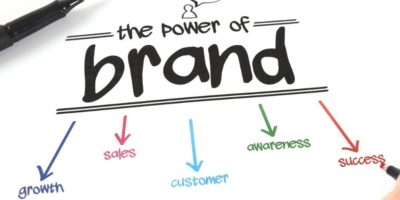
Top Benefits of Link Building in SEO For An Established Website
If you own and manage a website, the main challenge you face is to ensure that whenever people search for
Before we look at the different types of graphic designs, let us first define what is graphic design. Graphic design is the process of visual communication and problem-solving through typography, photography and illustration. Each type of graphic design has its own unique set of challenges and requirements.
There are many different types of graphic design. Each type has its own unique set of skills and techniques used to create the desired effect. Some of the most common types of graphic design include:
This type of graphic design is used to create website layouts. It involves the use of HTML, CSS, and JavaScript and often involves using a content management system (CMS).
Web designers can work in a variety of environments. They might work for an agency, a company, or be self-employed. They often use different software programs to create their designs. Some of the most common programs include Adobe Photoshop, Adobe Illustrator, and Adobe Dreamweaver.
Web designers must be able to think creatively and design visually appealing websites. They must also be able to understand the customer’s needs and create a website that meets those needs.
Product designers are responsible for the design of products. This type of graphic design includes everything from the initial concept to the final product. Product designers use a variety of tools and technologies to create their designs. Some of the most common tools include:
Product designers must also be familiar with the manufacturing process. They should understand how to take a product from concept to reality. This includes understanding the different types of materials that can be used, the manufacturing process, and the assembly process.
Product designers must also understand branding and marketing. They need to know how to create a product that meets the customer’s needs and fits within the brand guidelines. Graphic designers must also understand the different print processes. They should list examples including screen printing, digital printing, letterpress, lithography, flexography, gravure, and stochastic printing.
Signage designers create signs or other types of exterior/interior signage. Signs are used to communicate important information for people who are not familiar with the area. They can be very helpful in directing people to different locations they may need to go to.
For example, if you are walking around a city and do not know where you are going, you might see a sign at an intersection pointing you in the direction of the subway station. If it wasn’t for this sign, you might spend hours wandering around trying to find your way instead of getting there even sooner!
Signage designers must have a great deal of knowledge about a company’s brand guidelines. They need to know how signage should be designed and what materials can be used to create effective signage solutions. This means that they need to understand different printing processes, material options, typefaces etc. In addition, they will often work with architects and interior designers to find the best sign solution for a particular location.
Signage designers might work in an office independently or on a team. They might also be self-employed and work with clients directly on their signage solutions for different companies. They must be artistic because they often need to create multiple illustrations of the signage solution before the client approves it. Without artistic ability, it won’t be easy to develop new designs that the client will approve of.
Animation design is another type of graphic design which is the process of creating motion graphics. This can include anything from animated logos to full-length movies. Many different techniques can be used in animation design.
Animation designers are responsible for creating animated videos and images. This includes character design, storyboarding, motion graphics, and 3D animation. Animation can be used in a variety of ways, such as:
Animators often work in an office environment or studio under their name or as part of an animation firm that produces these videos and images for clients. Others work independently doing freelance animation work on their terms.
Animation designers must have a great deal of knowledge about the software they are using to create their animations. They should also be familiar with the principles to produce high-quality animations. Finally, they must have a good sense of storytelling and create engaging animations that will keep the viewer’s attention.
Packaging design is the process of designing the exterior and interior packaging that a product will be sold in. The package must not only look good, but it must also be functional. It needs to protect the product and make it easy to open and close. In addition, the package needs to be designed to attract attention to the product and encourage people to buy it.
Packaging designers use a variety of tools and technologies to create their designs. Some of the most common tools include:
Packaging designers must also be familiar with the manufacturing process. They should understand how to take a product from concept to reality. This includes understanding the different types of materials that can be used, the manufacturing process, and the assembly process.
Packaging designers might work in an office independently or on a team. They might also be self-employed and work with clients directly on their packaging solutions for different companies.
We read above what a graphic design is and some of the types of graphic designs. The main types of graphic designers are signage, product, and packaging designers. There are many different specialities within these fields, however.
Graphic designers work in various settings with different people depending on what type of design they do. They might work in an office by themselves or with a team, depending on the company’s size. Graphic designers can also be self-employed and do freelance work for companies that need different types of design help.

If you own and manage a website, the main challenge you face is to ensure that whenever people search for

Content marketing is a strategic marketing methodology that relies on creating and distributing valuable, meaningful, and consistent content in order

You can only sell better if you connect with your consumers well. Developing a connection with your consumers is the

Google Ads are paid advertisements that appear in search engine results on google.com or advertisements that show up on other

In today’s digitalized world, everyone is addicted to different forms of social media. Social media is not only used for

Your digital marketing efforts directly get reflected in your website. If you desire to have a great website user experience